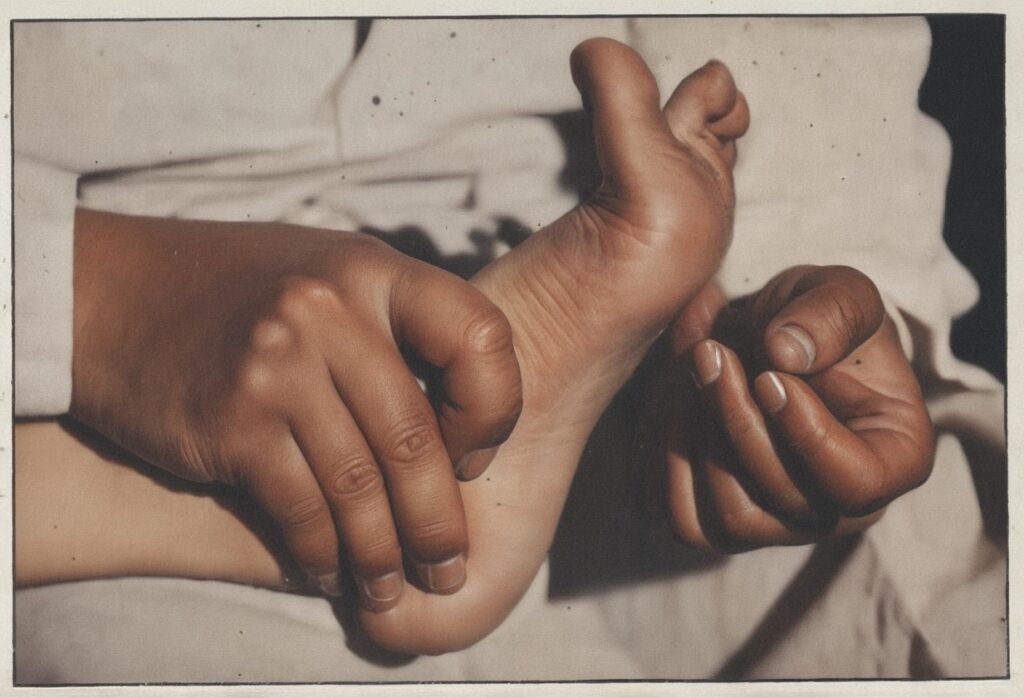Joseph Babinski

Joseph Jules François Félix Babinski (1857-1932) was a French neurologist.
1902, Babinski coined the term dysdiodochokinesis to describe the inability to perform rapid execution of movements requiring alternate contractions of agonist and antagonist muscles. Originally diadococinésie from the Greek diadocho (“alternating”) and kinesie (“movements”)
In 1899 Babinski observed that patients with cerebellar lesions could not execute complex movements without breaking down into their elemental movements (dysmetria). He introduced the term asynergia as a major deficit in cerebellar disease in 1899 as the “inability to carry out complex movements involving the harmonious cooperation of separate muscle groups”
Biography
- Born on November 17, 1857 in Paris, France
- 1885 – Charcot’s chief of clinic
- 1893 – took charge of the neurological clinic at the Pitie after Charcot’s death
- Died on October 29, 1932
Medical Eponyms
Babinski sign I (Babinski reflex)
1896 – Babinski described an extensor toe response that he claimed was a consistent finding among patients with pyramidal tract lesions of the cortex, subcortex, brain stem, or spinal cord. He considered it a distinct sign of organic disease and found it to be absent in cases of hysterical weakness.
Pathological reflex where the great toe extends and flexes toward the top of the foot and the other toes fan out when the sole of the foot is firmly stroked.

Anton-Babinski syndrome (Anton syndrome) – in the presence of complete blindness, a persistent confabulation and denial by the patient that there is any loss of visual perception
Babinski sign II (Babinski ear phenomenon) Galvanic test for unilateral hearing disturbance
Babinski’s sign III – the loss or lessening of the Achilles tendon reflex. A sign of sciatica, used to differentiate it from hyteric sciatica
Babinski syndrome (Babinski-Vaquez syndrome)
[Archaic term] Clinical form of late syphilis characterised by reflex pupil rigidity, anisocoria, aortitis, weakening of the Achilles and patellar tendon reflexes, chronic meningoencephalitis.
Babinski-Nageotte syndrome – unilateral bulbar affections with lesions of the medullobulbar transitional region. Cerebellar hemiataxia, contralateral hemiparesis, enophthalmos, ptosis, and miosis
Major Publications
- Babinski J. Sur le réflexe cutané plantaire dans certaines affections organiques du système nerveux central. Comptes rendus des séances de la Société de biologie et de ses filiales 1896; 48: 207–08. [Babinski sign]
- Babinski J. De l’asynergie cérébelleuse. Revue Neurologique 1899; 7: 784-785 [Asynergia]
- Babinski J. Diagnostic différentiel de l’hémiplégie organique et de l’hémiplégie hystérique. Gazette des hôpitaux civils et militaires (Lancette française) 1900; 73(52): 521-527 and 73(53):533–538 [Babinski sign]
- Babinski J. De l’influence des lésions de l’appareil auditif sur le vertige voltaïque [On the influence of auditory system lesions on voltaic vertigo] Comptes rendus des séances de la Société de biologie et de ses filiales. 1901;53: 77-80. [Babinski ear phenomenon]
- Babinski J. Des troubles pupillaires dans les anévrismes de l’aorte, Société Médicale des hôpitaux de Paris, 1901; 18: 1121. [Babinski syndrome]
- Babinski J. Sur le role du cervelat dans actes volitionnels nécessitant une sucession rapide de mouvemets (Diadococnésie). Revue Neurologique 1902; 10: 1013–1015 [dysdiodochokinesis]
- Babinski J, Nageotte J. Hémiasynergie, latéropulsion et miosis bulbaire. Nouvelle iconographie de la Salpêtrière, 1902: 492. [Babinski-Nageotte syndrome]
- Babinski J. Contribution a l’étude des troubles mentaux dans l’hémiplégie organique (anosognosie). Revue Neurologique, 1914; 27: 845-848. [Anton-Babinski syndrome]
- Babinski J, Froment J. Hystérie-pithiatisme et troubles nerveux d’ordre réflexe en neurologie de guerre. Paris : Masson et Cie. 1917
- Babinski J. Anosognosie. Revue Neurologique, 1918; 31(1): 365-367.
- Babinski J. Un nouveau cas d’anosognosie. Revue Neurologique, 1924; 40(2): 638-640.
References
Biography
- Fresquet JL. Joseph François Félix Babinski (1852-1932). Historia de la Medicina.
Eponymous terms
- Koehler PJ, Bruyn GW, Pearce JMS. Neurological Eponyms. Oxford University Press 2000: 113-118
- Goetz CG. History of the extensor plantar response: Babinski and Chaddock signs. Semin Neurol. 2002 Dec;22(4):391-8.
Eponym
the person behind the name
